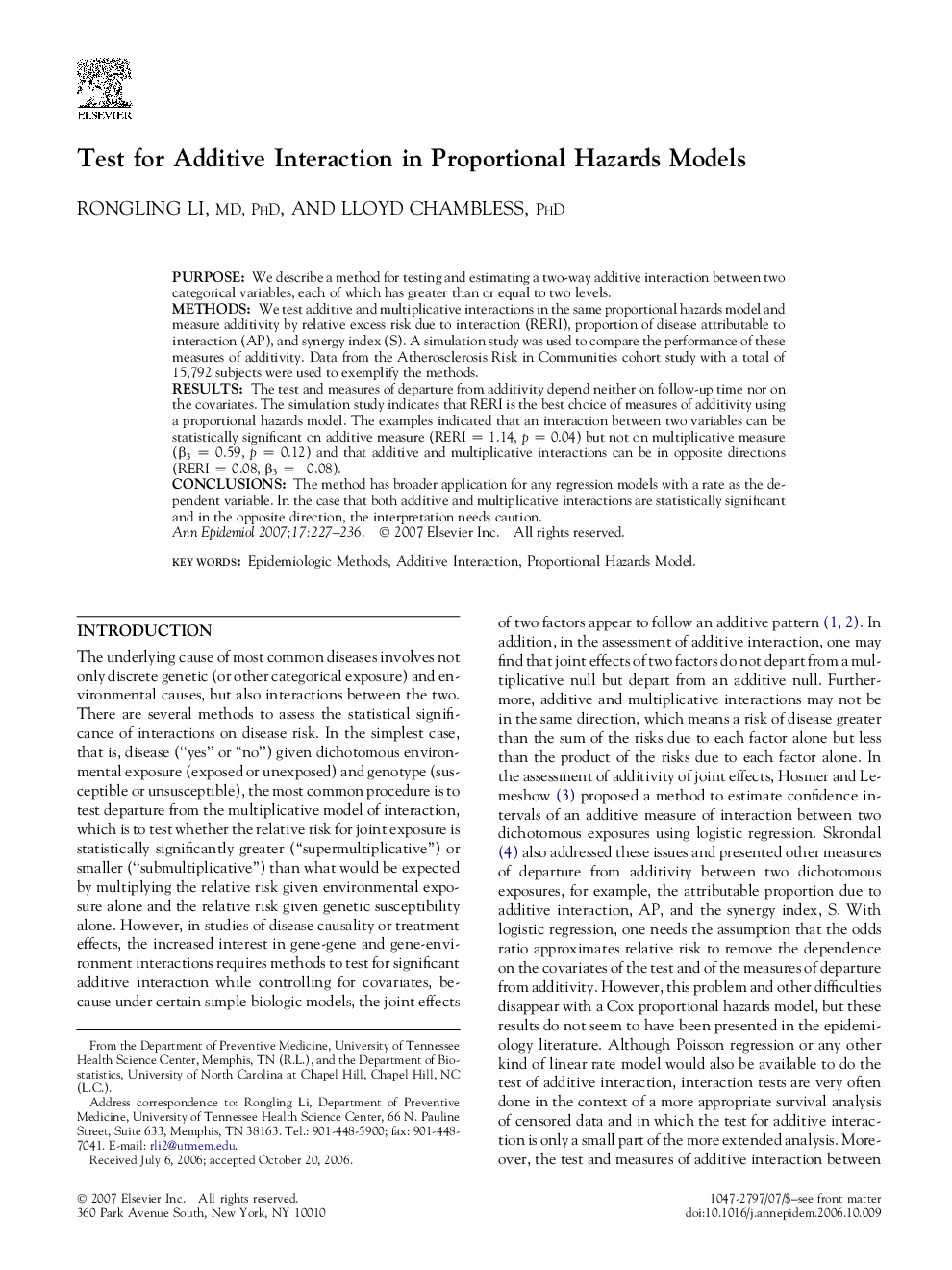| Article ID | Journal | Published Year | Pages | File Type |
|---|---|---|---|---|
| 3445400 | Annals of Epidemiology | 2007 | 10 Pages |
PurposeWe describe a method for testing and estimating a two-way additive interaction between two categorical variables, each of which has greater than or equal to two levels.MethodsWe test additive and multiplicative interactions in the same proportional hazards model and measure additivity by relative excess risk due to interaction (RERI), proportion of disease attributable to interaction (AP), and synergy index (S). A simulation study was used to compare the performance of these measures of additivity. Data from the Atherosclerosis Risk in Communities cohort study with a total of 15,792 subjects were used to exemplify the methods.ResultsThe test and measures of departure from additivity depend neither on follow-up time nor on the covariates. The simulation study indicates that RERI is the best choice of measures of additivity using a proportional hazards model. The examples indicated that an interaction between two variables can be statistically significant on additive measure (RERI = 1.14, p = 0.04) but not on multiplicative measure (β3 = 0.59, p = 0.12) and that additive and multiplicative interactions can be in opposite directions (RERI = 0.08, β3 = –0.08).ConclusionsThe method has broader application for any regression models with a rate as the dependent variable. In the case that both additive and multiplicative interactions are statistically significant and in the opposite direction, the interpretation needs caution.
